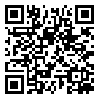Volume 2, Issue 4 (3-2015)
نظریه و عمل 2015, 2(4): 111-134 |
Back to browse issues page
Download citation:
BibTeX | RIS | EndNote | Medlars | ProCite | Reference Manager | RefWorks
Send citation to:



BibTeX | RIS | EndNote | Medlars | ProCite | Reference Manager | RefWorks
Send citation to:
Rahimi R, Assare A, sedghpour B. (2015). Analysis of 6th Grade Mathematics Textbook based on Plsek’s Creativity Model. نظریه و عمل. 2(4), 111-134.
URL: http://cstp.khu.ac.ir/article-1-2262-en.html
URL: http://cstp.khu.ac.ir/article-1-2262-en.html
Abstract: (29133 Views)
The aim of this research is to study the components of creativity in elementary school curricula. The research method used in this research is content analysis. The information source of this research is the 6th Grade Mathematics textbook in the academic year 1391-92. To achieve face validity, the viewpoints of the educationalists and experts were used in this research, and to achieve reliability, according to Pearson’s formula of correlation, the agreement coefficient of 0/89 was derived from the codification board. The tool of this research is the content analysis form with regard to Plsek’s teaching creativity model. A coded form was used to analyze the content of 6th Grade Mathematics textbook this task was accomplished in four stages: at the first stage, active and inactive units of the textbook were specified. At the second stage, the inactive units were deleted. At the third stage, the active Units were coded based on the parameters of Plsek’s guided cycle of creativity, and at the fourth stage, data resulted from the research were analyzed by using Shannon Entropy analysis method and the descriptive statistics methods. The findings indicate that the degree of attention and involvement parameters of Plsek’s creativity model and the coefficient degree of importance for each parameters are very low, and so the contents of 6th grade mathematics textbook are nor adapted to the Plsek’s creativity principles and it hardly can be effective in generating and fostering creativity in learners.
Keywords: Content analysis, creativity, Primary School s 6he Grade Mathematics Book, Plseks’ guided components of creativity, Shannon Entropy Analysis Method
Type of Study: Research |
Accepted: 2017/11/11 | Published: 2017/11/11
Accepted: 2017/11/11 | Published: 2017/11/11
| Rights and permissions | |
 |
This work is licensed under a Creative Commons Attribution-NonCommercial 4.0 International License. |





